- NEW DVD Series – Stone Setting with Bezels
- Tube Set Charm by Kim St. Jean
- Prong Basket Pendant by Kim St. Jean
- NEW DVD Series – Stone Setting with Cold Connections
- New DVD Series – Stone Setting with Wire
- NEW DVD Series: Introduction to Stone Setting by Kim St. Jean
- Featured Tool: Bracelet Bending Plier
- NEW Dvd by Eva Sherman
- Fun, Fast Fold Forming DVD Series
- Double Band Ear Cuff from Alex Simkin
FREE Pattern: Figure 8 Chain
by Judy Ellis, Wirejewelry.com
Wire Jewelry Pattern for May 4th, 2017
Figure 8 Chain
by Abby Hook
This tutorial shows you how to make a simple figure 8 chain that is ideal for using up all those little scraps of 18 and 20 gauge wire. You can use round, half round or square wire, or a mixture to create a pattern in your chain. The links can be used on their own, as an alternative to jump rings as they are very strong, or connected together to form a chain
Materials:
- 20 Gauge Round Half Hard 1/10 Sterling Silver Filled Wire (Pattern Quantity 5ft, Product ID: H10-20H)
- 18 Gauge Round Half Hard 1/10 Sterling Silver Filled Wire (Pattern Quantity 5ft, Product ID: H10-18H)
Tools:
- Chain Nose Wire Plier (Product ID: G2-508)
- Round Nose Wire Plier (Product ID: G2-507)
- 5 inch Plato Slim Flush Cutters for Wire Working or Beading – Pack of 1 (Product ID: G35-3)
- Premium Nylon Jaw Pliers (Product ID: G2-35)
Directions:
Step 1: TIP: Please note 3″ of wire makes approximately 1″ of chain, so 5ft of wire will make approximately a 20″ chain. Any 18g or 20g wire can be used for this pattern, however, craft wires may be a bit too soft to hold securely. And 18g wire will always be stronger. The wires suggested in the pattern, above, are half hard silver filled. Sterling wire is another good choice for this chain.
Step 2: If you are using scrap wire to make the connectors or chain, the first thing you need to do is sort and size your wire pieces. For 20 gauge wire you need pieces that are 2/3” long and for 18 gauge they need to be ¾” long. For the purposes of this tutorial I am working with 20 gauge wire.
Make sure your wire pieces are straight. If they need to be straightened, hold one end with the chain nose pliers and pull through the jaws of the nylon jaw pliers – voila – one straight piece of wire.
Step 3: It is important that each link is identical so that the chain is an even size. The easiest way to ensure this is to mark your round nose pliers so that each loop is formed at the same point. We first need to find this point. Find the middle of your wire and mark it with your marker pen. This is the point where the two ends of the wire should meet. You only need to do this on the first piece of wire.
Step 4: Grasp the piece of wire at the very end with your round nose pliers – close to their tip and make a loop so that the end meets with your pen mark on the central point.
Do this by holding the other end of the wire between your fingers and turning the pliers to form a loop.
Step 5: You may need to try step 3 a couple of times to find the perfect point on your pliers, so that the end of the wire lines up perfectly with your pen mark. Once you have found this point, mark the pliers with your pen and ensure that each future loop is made round this point. The marks shown are the best spots on my pliers – these points may vary slightly on different brands of pliers.
Step 6: Grasp the first loop with your chain nose pliers, so that the straight piece of wire is pointing downwards towards your hand.
Grasp the straight end of the wire with your round nose pliers at the point where you made your pen mark on the jaw and form a second loop in the opposite direction to the first.
Ensure that the end of the wire lines up with the pen mark.
Step 7: Carefully grasp the wire shape with the chain nose pliers, so that one jaw is against the end of the wire and the other is against the opposite side of the same loop and gently squeeze.
Repeat on the other side. Notice how each end now sits against the central wire and forms a straight line, completing the figure of 8 shape.
Step 8: Squeeze tightly between the jaws of the chain nose pliers on both sides to ensure the shape is completely flat and the ends do not stick out at all so that they do not catch on anything. This also helps to harden the wire.
Step 9: Once you have made a few links, you can begin to connect them together to form a chain. Open one loop by twisting one end upwards with the chain nose pliers.
Do not pull open as this will weaken the wire.
Step 10: Thread the closed loop from another figure of 8 onto the loop you have just opened.
Twist the loop closed using your chain nose pliers and squeeze between the jaws again to ensure there are no snaggy ends.
To speed up production, I find it best to work in batches. Form the first loop on a number of lengths of wire, then go through and form the second loop, then close all the loops and so on. You will find that you are able to complete the chain much faster this way.
Step 11: Keep adding figure of 8 connectors until your chain is of the required length. Attach a clasp in the same way you add connectors and thread on your favorite pendant. You have finished!!!
Happy Chain Making!
![]()
Click to Receive Daily Tips by Email





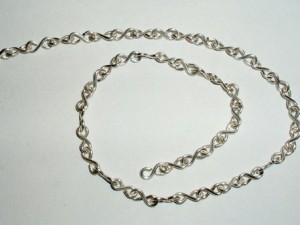
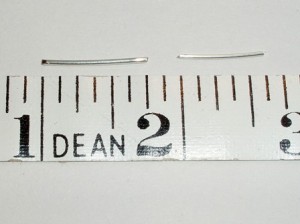
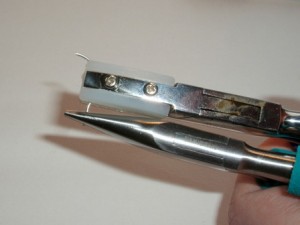
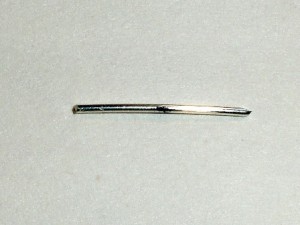
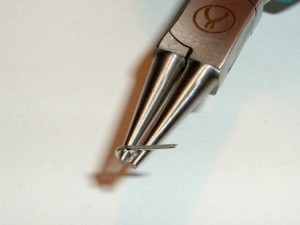
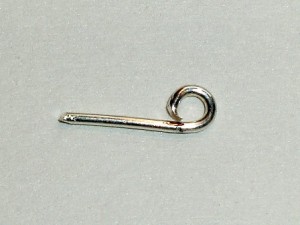
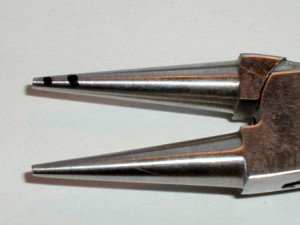
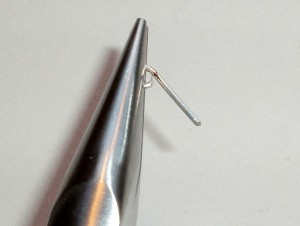
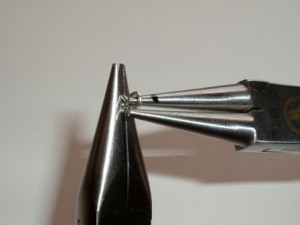
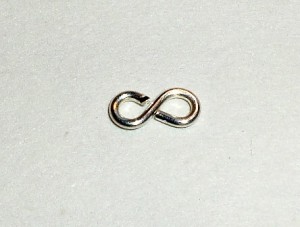
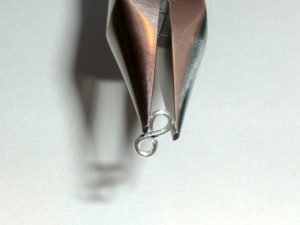
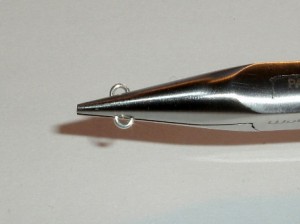
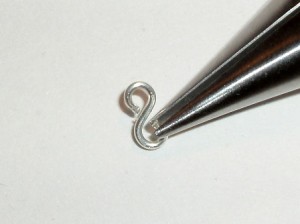
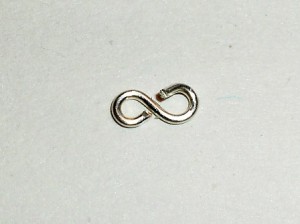
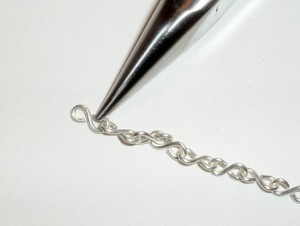
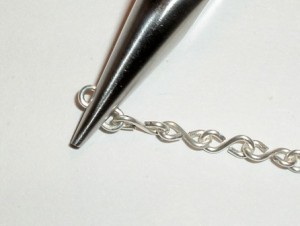
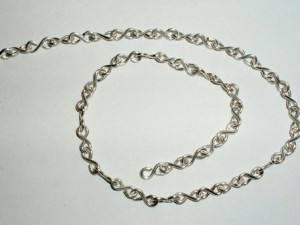














0 comments